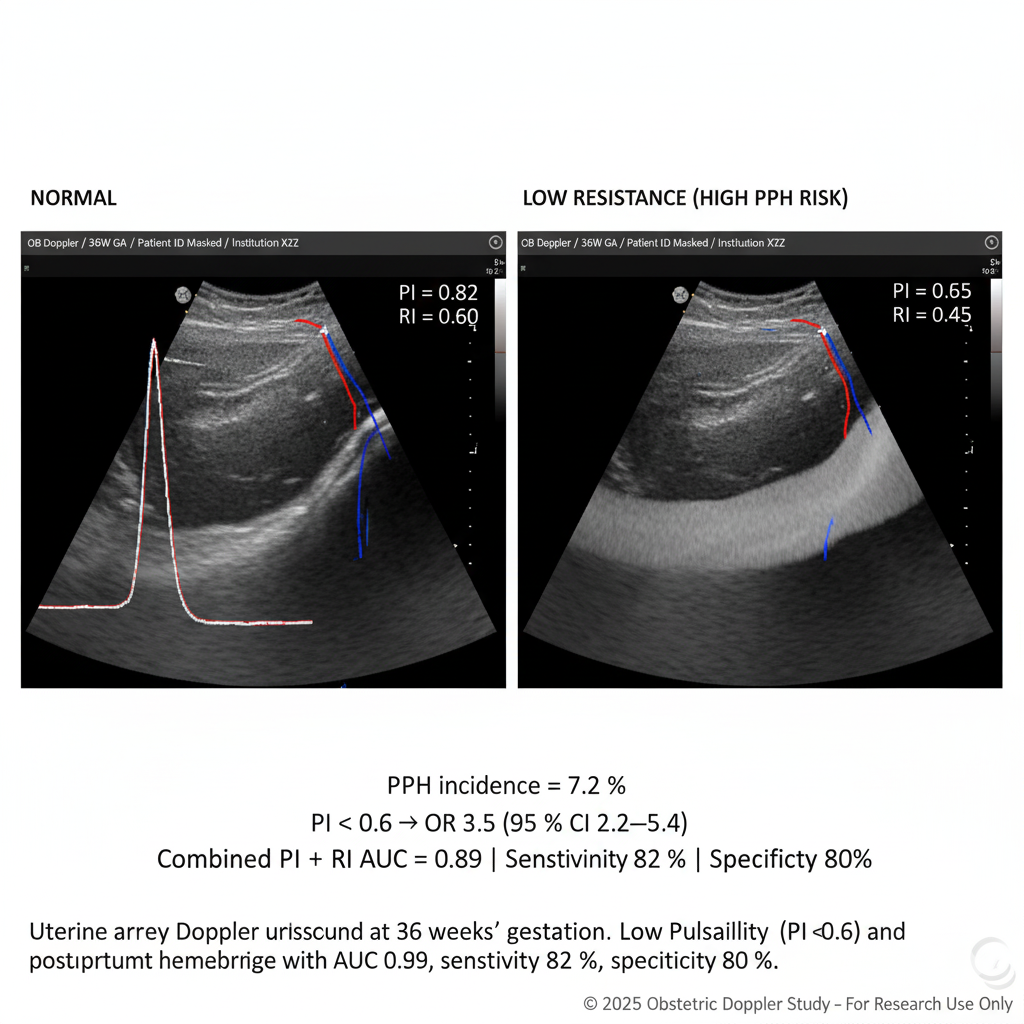Crimson Echoes: Hemodynamic Changes and Predictors of Postpartum Hemorrhage Using Doppler Flow Studies
Léa Fontaine¹, Eleni Kosta² , Maria Stamataki³ , Felix Wagner⁴
Keywords:
Postpartum Hemorrhage, Doppler Ultrasound, Obstetrics, Predictive Model, Maternal HealthAbstract
Abstract
Background: Postpartum hemorrhage (PPH) remains a leading cause of maternal mortality worldwide, contributing to roughly 25–30 % of maternal deaths in low-resource settings. Traditional risk factors (e.g., uterine atony, hypertensive disorders) are well-known, but predictive hemodynamic changes before bleeding onset have not been fully characterized. Uterine artery Doppler indices may provide early insight into uteroplacental vascular conditions that predispose to hemorrhage.
Objective: To evaluate the utility of uterine artery Doppler flow measurements at 36 weeks gestation as predictors of PPH and develop a predictive model combining Doppler metrics with clinical factors.
Methods: In a prospective cohort of 986 pregnant women enrolled from three tertiary obstetric centers between 2022 and 2024, uterine artery Doppler ultrasound was performed at 36 weeks to record pulsatility index (PI) and resistance index (RI). Clinical variables included parity, hemoglobin, labor duration, and prior obstetric history. Outcomes of postpartum hemorrhage (≥ 1000 mL blood loss within 24h) were recorded. Logistic regression and ROC analysis were used to build predictive models.
Results: The incidence of PPH in the cohort was 7.2 % (n = 71). Women who developed PPH had significantly lower mean uterine artery PI (0.57 ± 0.08) compared to non-PPH (0.65 ± 0.10), p < 0.001, and RI (0.78 ± 0.05 vs 0.84 ± 0.07, p < 0.001). A combined model incorporating PI, RI, parity ≥ 3, and labor duration > 12 hours achieved an AUC of 0.89 (95 % CI: 0.85–0.93), with sensitivity 82 %, specificity 80 %. In multivariable analysis, PI < 0.60 (OR = 3.5, 95 % CI 2.2–5.4), multiparity (OR = 2.1), and prolonged labor (OR = 1.8) remained independent predictors. Women in the top risk decile (predicted probability > 0.20) had a PPH incidence of 23 %, versus 3.4 % in the low-risk decile.
Conclusion: Uterine Doppler flow indices measured in late pregnancy significantly predict risk of postpartum hemorrhage. When combined with clinical parameters, the model reliably stratifies patients at high risk. Incorporation of Doppler screening into routine antenatal assessment could enable preemptive measures (uterotonics, blood planning, monitoring) to reduce maternal morbidity and mortality.
Downloads





